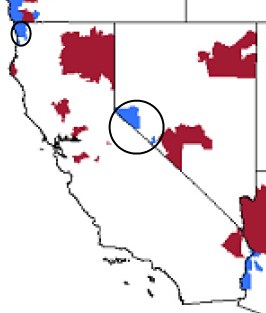The Concord Monitor published an editorial Sunday suggesting that FairPoint Communications’ crash and burn bankruptcy is, in fact, a good thing for New Hampshire.
FairPoint’s bankruptcy was always a distinct possibility. At this point, it’s good that it happened. The massive reduction in debt that will result will either allow the company make good on its promise to provide widespread broadband service or make it attractive to a buyer capable of doing so. Surviving on landlines alone isn’t an option.
FairPoint’s debt would have been hard to repay even in good times by a smoothly operating company. The severe recession, lousy service that caused customers to flee in droves and high interest rates on its debt doomed FairPoint.
This is like saying the GM’s bankruptcy was a great thing for Detroit. The Concord Monitor would do better to beat the drum for utility commission reform, to make sure such bad deals don’t get approval in the first place. As it stands, FairPoint’s promises aren’t worth much in good times or bad. How many broken promises should cust0mers endure before realizing money alone does not resolve bad decisions, bad implementation of those decisions, and now “cost savings” from a company that cannot afford to lose a single technician or customer service employee.
Making FairPoint attractive for a buyout or merger means slashing costs, and we all know where that will happen – among local employees who do the work to keep the company running. Another merger or buyout with a sweet bonus for management will do little for New Englanders who rely on FairPoint for telephone and broadband service unless the buyer has the resources to provide a more advanced platform for telecommunications in this century.
The editorial is right in calling out the enormous debt FairPoint took on to make the deal happen. It would be hard to repay in good times by a smoothly operating company, which is precisely why those who live in the next round of cities Verizon is about to cast into the wild Frontier should be so very wary. The economy, it’s suggested, is getting better, but for those of us in economically challenged states like New York, Ohio, West Virginia, and others where Frontier operates wouldn’t know it from looking around their communities. If FairPoint thinks it has a challenge now, watch as customers trying to economize continue to pull the plug on their phone lines. As cell phone plans continue to offer more minutes (or unlimited access), why pay for two phone bills when one is high enough?
Most of FairPoint’s customers have another option: cell phones. Between June 2008 and June 2009 the company lost 11 percent of its landline customers. They’ll lose customers even faster if they raise prices. There are other threats to FairPoint’s future. Small companies and cooperatives are beginning to offer wireless internet service in rural areas. So even if FairPoint succeeds in extending broadband into the boonies, it could face competition.
Considering FairPoint, like Frontier, is relying on rapidly aging ADSL technology for broadband, and has few apparent plans to meet the needs of a wider bandwidth future, old fashioned DSL broadband isn’t far behind copper wire landlines on the endangered species list. But FairPoint, like Frontier and other independent companies focusing on rural communities may be betting their business plans that for the same reason Verizon said goodbye, would-be competitors will never drop in and say “hello.” In communities too small for cable companies, the prospect for wireless broadband, or other competition, isn’t exactly rosy.
Not so the investors in FairPoint, who will exchange hundreds of millions of dollars in debt for stock that at week’s end was trading for just over a dime a share. The investors gambled and lost. The free market worked.
The free market worked particularly well for Verizon, who played the system and won an enormous bounty. Investors taking a beating will write off their losses and move on. Where do rural FairPoint customers go to write off their loss in the broadband backwater they’ll be stuck in indefinitely? FairPoint actually represented another failure in the free market, because of the lack of appropriate oversight which should have taken one look at this deal and the debt pile-on it represented, and then rejected it as inappropriate for a utility to gamble with ratepayers’ money.
FairPoint made a number of commitments to win state approval of its purchase. Whether such agreements must be kept is now up to the court.
Utilities are classically required to provide universal service. Urban customers subsidize service for rural ones for the good of society and because they may want to communicate with them. But the game changed when technology allowed other unregulated companies to poach on a utility’s turf by offering cheaper or better service.
FairPoint will keep operating, and its customers are unlikely to see any effect from its decision to declare bankruptcy to reorganize and shed debt.
Don’t pick me up off the floor shocked and surprised when FairPoint and its banker-owners walk into court begging to be freed from the “onerous commitments” they made to get the deal done in Maine, New Hampshire, and Vermont. Those “hard won” concessions by utility oversight boards may be nothing but memories soon enough. The game change of telecommunications choice has come to more urban areas, where customers have options. That isn’t necessarily the case for rural New England consumers without cable and with zero bars on their cell phone from home.
Customers who earlier thought that no changes in the quality of their FairPoint service meant “more crappy” service in their future may find the “crap bar” still has plenty lower to go should the company seek to realize its fiscal conservatism at the expense of its experienced and competent workforce who have coped with bad management decisions since day one. Somehow the “must keep” employees might just turn out to be the same folks at FairPoint headquarters in North Carolina who made the bad decisions that put the company in its current predicament.
Strong, careful oversight of any restructuring is essential to protect New England ratepayers from being victimized all over again.


 Subscribe
Subscribe





